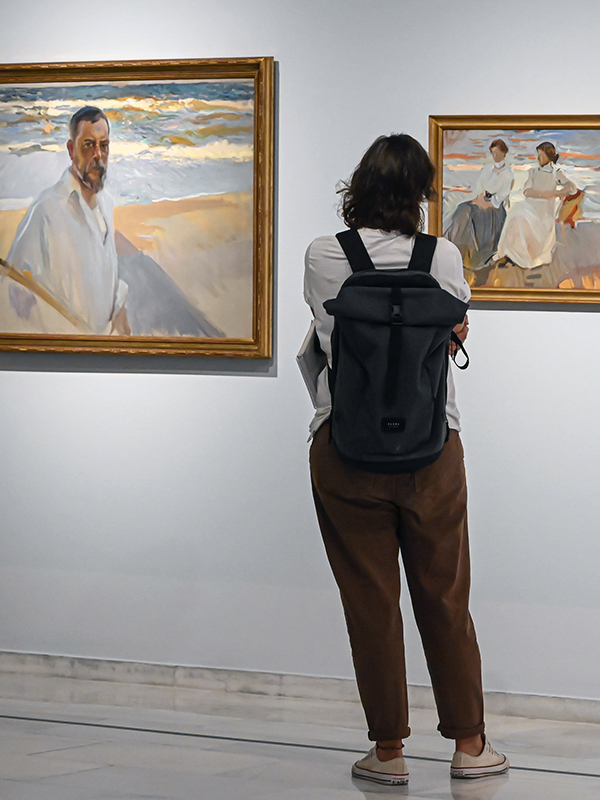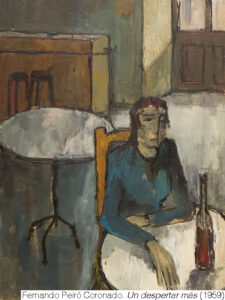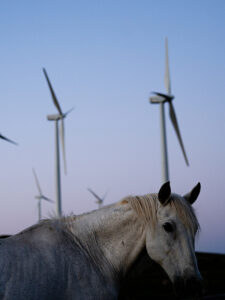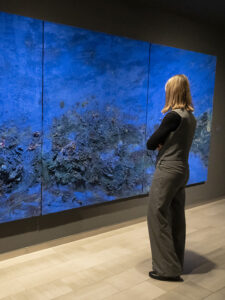UNTIL SUNDAY 9/3
F. BANCAJA. Pl. Tetouan, 23
The Bancaja Foundation closes the celebration of its ten years as an independent entity by hanging on to a secure value that always sells and that, besides, it's from the earth. Since in 2007 the institution brought to Valencia that series of enormous canvases by Sorolla called Vision of Spain, has organized more than twenty exhibitions that revolve around the most illustrious of Valencian painters. He has looked and re-looked at Sorolla from a thousand prisms and this time he does so by pairing the painter's art with the literature of another Valencian who made his career in Madrid.: Manuel Vincent. Yours is not an academic contribution, but sensory, born from another artistic discipline that does not play with oil, but with words. Vicent has sailed the coast of Xàbia that Sorolla painted with such admiration a hundred times and remembers the smell of tar and caulk of the ships stranded in another part of the Mediterranean, Moncofa beach, with its boulders wrapped in foam. Breathing these experiences, Vicent writes to accompany his countryman's paintings bathed in the Mediterranean, treasure of nature and source of infinite inspiration that allows you to spread light and color across the canvas. Logically, the sea is the owner and lord of this exhibition, and in it he adopts different roles: as a source of pleasure and sensory discovery, as a work setting for fishermen and fisherwomen, as a place of leisure for the Valencian bourgeoisie and as a reference for spirituality. Naked children run along the shore laughing, reflecting the iridescent vibrations of the sun in their flesh., the fisherwomen review the nets that feed them on the same sand, and the bourgeois, long dresses, with pompous hats and distinguished umbrellas, They walk on the beach or rest in the rocking chair. No private pools infinity, The beach was a social area for the Valencian bourgeoisie and a workplace for fishing people whose natural habitat was not the spa., rather the barracks.
To each other, Sorolla paints them (almost) always doing things, passing through the frame at a specific moment of action. His main concern was to capture the moment, the movement of water and wind, atmospheric or environmental changes, leaving the impression of reality. The immediacy, The everyday nature and verisimilitude of Velázquez's paintings were qualities to pursue. Sorolla insisted on fixing the light contrasts of the sun on the sea water or on fabrics swaying in the wind., For example, on the canvas Swimmers, Javea (1905). Its concern about reflecting the effect of the sun's rays on children's wet skin is obvious., for transmitting as, gradually, light penetrates through sea water. As? With quick brush strokes and loose execution, following the Italian current of the Macchiaioli (“manchistas”) and the style of Nordic artists such as the Swedish Anders Zorn, who captured the movement as if it were a photograph. It seems that the Valencian paints the paintings at once, without studies or hesitation, but nothing could be further from the truth, There was a lot of study behind that loose brushstroke with which Sorolla became world famous.. Anniversaries sometimes serve to vindicate little-known artists, we have seen it done recently with Antonio Muñoz Degraín at the Museum of Fine Arts, but the centenary of Sorolla's death does not go there because, it is evident, that at this point there is no need to claim it at all, just celebrate it. One more time. S.M.















